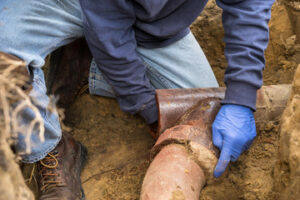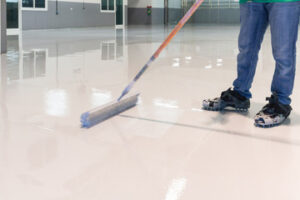A sump pump is a useful tool for dealing with moisture in your basement. It works by triggering an electric motor when a float switch rises in the pit, drawing water out of the discharge line and pushing it away from your home. Be sure to test it regularly to ensure it’s working properly. For professional help, contact Plumbers Spring TX.

A submersible sump pump is a great choice if you live in an area prone to flooding and heavy rains. This type of pump is designed to sit in a sump pit below the basement floor, where it is powered by the water that flows into it. Its location underground also allows it to use less energy, and the surrounding water helps keep the pump cool, which prevents overheating. Its ability to move large volumes of water in a short amount of time makes it ideal for flood prevention and removal, as well as draining swimming pools.
Depending on the application, different types of submersible pumps are available. These include:
Utility Pumps: These submersible pumps are used for tasks such as draining flooded areas, emptying pools or hot tubs, and transferring liquid between containers. They are particularly useful in residential construction sites and emergency situations where rapid water extraction is necessary.
Dewatering Pumps: These submersible pumps are designed to work underwater, removing water from flooded areas and directing it to drainage pits or tanks. They are often used in mining, dredging, and construction projects to prevent flooding.
Grinder Pumps: Unlike other types of submersible pumps, grinder pumps incorporate cutting blades to break down solid waste materials before pumping them into the sewer system. They are ideal for sewage treatment applications, where they can reduce raw sewage to fine sludge that is easier to transport.
Oil Filled Pumps: These submersible pumps are cooled by the oil in which they are immersed, which prevents them from overheating during operation. They are often used to lift water from a well. They are popular in the oil and gas industries, where they are commonly used to remove water from the drilling process.
While a submersible sump pump is typically more expensive than a pedestal pump, it may be worth the investment if you are in an area that is prone to flooding. It’s also important to consider long-term costs, including replacement and energy usage, when choosing a pump. Also, remember that a submersible pump requires a larger sump pit, so it’s important to consider your space before installing one in your home.
Water-powered
Although there have been some hoaxes claiming to have created water powered cars, no such technology has been successful. This has led to conspiracy theories that large oil companies are suppressing the development of clean energy vehicles.
While the cost of a water-powered backup pump is higher than that of a battery operated model, it has the advantage of never losing power. It also doesn’t require any batteries, making it a popular choice for vacation homes and homeowners who don’t want to monitor their sump pumps as frequently.
It’s important to note that a water-powered backup pump can only work if your home is connected to the city water supply. However, some municipalities require a backflow preventer for water-powered pumps, so it’s important to consult with your local plumbing inspector before installing one. In addition, you may need to have a backflow test performed on your home every couple of years.
Maintenance
Plumbing maintenance includes a series of inspections and repairs aimed at catching small problems before they become large, costly issues. This includes checking for leaks, inspecting pipes for corrosion, flushing water heaters, and cleaning drains. It also involves keeping records of these activities, which helps ensure compliance with local plumbing codes and regulations.
A faulty plumbing system can lead to flooding, mold growth, and water damage. In addition, it can increase your water bills. Regular plumbing maintenance can prevent these problems and help you save money on your energy bill. It also saves you the inconvenience and expense of dealing with major plumbing problems.
Most homeowners don’t think about their plumbing until they experience a problem, but it is important to perform routine plumbing maintenance. This prevents costly repairs and keeps your home safe. It also helps protect your property value and ensures that your family has access to clean drinking water.
The most common sign of a plumbing issue is low water pressure. This can be caused by mineral deposits in your plumbing system, so it’s important to get these cleaned regularly. You can also use a water softener to reduce the minerals in your home’s water supply.
Other signs of a plumbing problem include strange noises or odors. These may indicate a blockage in your pipes or a clogged toilet. You can fix these issues with drain cleaners or professional services.
In addition to preventing costly emergency repairs, plumbing maintenance can lower your water bill and improve your home’s comfort. It can also help protect your property value and make it more appealing to potential buyers.
Leaks are a significant source of water waste, and addressing them promptly can help you avoid costly repair bills. For example, a single leaking toilet can waste as much as 30 gallons of water daily. A professional plumber can inspect your plumbing and find and repair these leaks to help you save money on your water bill.
Many homeowner’s insurance policies won’t cover the cost of repairing damage caused by neglect, including water damage from a burst pipe. Preventative maintenance can prevent this from happening by detecting and repairing problems before they become more severe.








